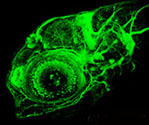

| home |
| people |
| movies |
| publications |
| confocal |
| protocols |
| slideshow |
How to find us:
OHSU
School of Medicine
Department of Cell, Developmental & Cancer Biology
3181 SW Sam Jackson Park Rd
Basic Sciences L215
Portland, OR 97239
Recent news |
|
Hannah and Adam gave talks at NWDB meeting. Hannah 's talk earned her forst place, while Adam got second. Congrats to both! Hannah Olson's manuscript came out in Dev Bio. It describes the role of lamellipodia like protrusions and focal adhesions in collective cell migration. Read more here. Congrats Hannah! Our lab was awarded a new R01 grant from NIGMS. This award will support our work on collective cell migration. Specifically, it focuses on the role of protrusive activity during collective cell migration and how Wnt signaling pathway regulates this activity. Cell migration is one of the fundamental processes shaping the developing embryo. Collective cell migration is a specialized form of coordinated cellular migration where cells maintain cell-cell contacts, group polarization, and coordinated behavior. Collective cell migration is essential for numerous processes during development, including neural tube closure, blood vessel branching, and neural crest cell migration. Consequently, disruption of this process during development can lead to severe birth defects. There is also a growing body of evidence that epithelial tumor cells move as cohesive groups during tissue invasion, in a process termed collective cell invasion, which is analogous to collective cell migration during embryogenesis. Thus, a mechanistic understanding of collective cell migration should provide important new insights into tissue morphogenesis during embryogenesis and abnormal cell migration in diseases. However, the molecular mechanisms that regulate collective cell migration remain poorly defined. As cells migrate, they must extend protrusions to interact with the extracellular environment, sense chemotactic cues, and act as points of attachments and signaling centers to coordinate the migratory behavior. The regulators of protrusive behavior have been widely studied in cells that migrate individually; however, how protrusive behavior is controlled throughout collectives is not well understood. To tackle this problem, we are using unique advantages of the zebrafish model system, including amenity to live imaging and advanced genetic approaches. Using mosaic labeling of filamentous actin, we discovered an abundance of brush-like, actin-based protrusions in multiple cells across the migrating collective. Live imaging revealed that these previously undescribed structures are highly dynamic, oriented towards the direction of migration, and prevalent in the leading part of the collective. We further demonstrated that these protrusions are Arp2/3 dependent and are required for collective cell migration. We have previously shown that the canonical Wnt signaling is necessary for cell movement during collective cell migration. We have also found that a high number of Wnt target genes are known regulators of actin dynamics; these genes are expressed in distinct regions of the collective and their expression pattern is perturbed under Wnt-deficient conditions. We therefore hypothesize that protrusive behavior during collective cell migration is coordinated by a differential activity of Wnt target genes that regulate actin dynamics. To test this hypothesis, we will 1) define the type of protrusions and molecular machinery that regulates their activity; 2) determine the role of major signaling pathways, including Wnt and Fgf, in regulating this behavior; and 3) identify novel regulators of protrusive behavior during collective cell migration. Better understanding of collective cell migration during organ development will help to elucidate how this process is disrupted in various developmental disorders as well as during cancer invasion.
We received a new R21 from NINDS to define transcriptional profile of pioneer neurons in the peripheral nervous system. Our lab will perform scRNA-seq and data validation, while the Miller lab at UofO will perform data analysis. Pioneer neurons are the first to extend axons to a particular region or target, acting as a guide and scaffold for “follower” axons. In most cases, pioneer neurons are essential in the developing central and peripheral nervous systems for the initial navigation to appropriate targets, proper follower axon pathfinding, and promoting follower axon outgrowth. Many studies have noted that pioneer neurons differ from followers in growth cone morphology and actin dynamics in multiple invertebrate and vertebrate model systems. These observations strongly argue that pioneer neurons possess a specific genetic program that controls distinct aspects of their growth cone morphology and behavior. Despite these critical roles and the unique axonal behavior of pioneer neurons, we still know little about 1) which genes are differentially expressed in pioneer versus follower neurons; and 2) how these transcriptional differences in turn promote specific pioneer neuron behaviors, such as enhanced axon outgrowth and protrusive activity in the growth cone. Our study will address this knowledge gap by identifying pioneer neuron-specific genes and testing their roles in axon growth. Our preliminary work has found that expression of a neurotrophin receptor Ret is highly elevated in a population of pioneering peripheral sensory neurons and is required for pioneer axon outgrowth. Furthermore, ret mutant pioneer axons display altered growth cone morphology, including reduced growth cone size and fewer filopodia. Thus, ret represents a unique marker of sensory pioneer axons. We will capitalize on this finding to isolate and interrogate a transcriptional profile of pioneer neurons. In Aim 1, we will use a single cell RNA-sequencing (scRNA-seq) to build a transcriptional profile of ret-positive pioneer neurons and identify genes that are enriched in the pioneer versus follower neuron subpopulations. In Aim 2, we will screen a list of genes from our scRNA-seq to identify candidates that play a role in growth cone dynamics and axon extension. In summary, our work will provide significant advancement by 1) generating a transcriptional profile of pioneer neurons during axon outgrowth to provide specific markers for studying pioneer neuron biology; and 2) testing the function of pioneer neuron-specific genes to identify new factors that promote pioneer axon growth in development. Benjamin Woodruff joined our lab. Ben's reserach will focus on pioneer neurons of the peripheral nervous system. He will use scRNA-seq and in situ hybridization to find genes that are specifically expressed in pioneer neurons. He will then use CRISPR-Cas9 system to probe function of these genes.
A new manuscript entitled "Retrograde Ret signaling controls sensory pioneer axon outgrowth". This work describes how a long range signaling through a neurotrophin receptor Ret regulates axon growth: click here for the article access. Lauren Miller has been awarded a spot on the the NIH funded T32 called Program in Enhanced Research Training (PERT). This training fellowship will provide a one year of fundidg as well many professional training opportunities. Congratulations Lauren!
Our lab was awarded a new R01 grant that focuses on the role of a long-range, retrograde Ret signaling during axon outgrowth. Some prelminary data from this grant application are under review and have been deposited to bioArxiv: click here for the article.
Hannah Olson received an NRSA award to study colelctive cel migration using zebrafish lateral line as a model system. This award will support her reserach through the fall of 2021. Congrats Hannah!
Hillary is a newly minted Assistant Professor. She will be moving to University of Missouri at Kansas City to set up her own lab. Her lab will be focusing on mechanisms of collective cell migration using zebrafish posterior lateral line as a model system. Congrats Hillary and good luck!! This work identifies a novel regulator of retrograde transport of mitochondria in axons, called Actr10. This protein a component of dynactin complex and has a specific role in attaching mitochondria to the retrograde motor dynein for transport. This study was carried in collaboration with the Monk lab (Washington University/The Vollum Institute for Neuroscience). article link>
Hannah Olson, a neuroscience program student, joined the lab. Hannah will be carrying out a research project focused on collective cell migration. Welcome Hannah! Katie Drerup moved on to set up her own lab at NIH. Her lab will be focusing on how retrograde transport regulates various developmental processes, like axon extension and circuit formation (see more here). Here is a pic from her goodbye party:
Katie's and Sarah's work describes how interaction between Kinesin-3 motor and a protein called KBP (kinesin interacting protein) regulate axon extension by transporting SCG10 (Stathmin2) to the growth cone where it regulates microtubule dynamics. Read the paper here.
Adam Tuttle is a new post-doctoral fellow in our lab. Adam did his PhD at UC Irvine and will be studying axonal transport. Welcome Adam! Hillary's paper describing the role of Wnt modulator Kremen1 in the lateral line has been published in journal Development. This paper shows a surprising role for Kremen1 in positively modulating canonical Wnt activity in the lateral line primordium.
Katie Drerup received a prestigious Pathway to Independence Award from NINDS. This award will support two years of her postdoctoral research ($90,000/year) and three years of her independent research ($250,000/year). The award is aimed at studying dynein-mediated transport in zebrafish. This review describes types of multicellular rosettes that form during organ development and maintenance as well as molecular bases of their formation. Read more here> Here are some picks from the lab hike to Falls Creek Falls. Beautiful place!
Ski trip on Mt Hood, SARA
KATIE THE REST
Matt defended his thesis entitled "Origin of cranial sensory systems". Specifically, Matt studied how cranial sensory placodes (epithelial structures that give rise to the cranial sensory neurons) develop in zebrafish. Matt is moving on to his postdoc at Massachusetts General Hospital in Boston to study chemical genetics of behavior in David Kokel's lab. Congrats and Good Luck!
Molly successfully defended her thesis on the 4th of September. The title of her thesis project is "Regulation of cell shape during development of the nervous system". Over the course of her thesis research, Molly has studied how cells change their shapes during two distinct processes, formation of polarized epithelial rosettes and axon extension. Molly is staying in the lab until mid February, 2014 to finish her axon extension project. Molly is also writing a review article on polarized epithelial rosettes. Here is the pic of the happy academic child and happy academic dad:
We are excited to report that Katie's paper entitled " JNK-Interacting Protein 3 Mediates the Retrograde Transport of Activated c-Jun N-Terminal Kinase and Lysosomes" has been published in journal PLoS genetics. This study establishes zebrafish as a model system for in vivo analysis of axonal transport and identifies Jip3 as a crucial adaptor for retrograde transport of pJNK and lysosomes (PUBMED).
Matt McCarroll, a graduate student in the lab, received a one-year Ronny Lacroute fellowship from the Oregon Brain Institute. The fellowship will support Matt's research in identifying cues responsible for induction of cranial placodes in zebrafish. Congratulations Matt!
Hike to Mt St. Helens The braver part of the lab hiked the rim of Mt St Helens. Check it out:
On the way up:
At the rim:
View from the top (Spirit lake and Mt Adams):
Molly's study shows that FgfR-Ras-MAPK pathway regulates apical constriction in the newly forming rosettes of the posterior lateral line primordium. This pathway is responsible for the apical positioning of Rho-associated kinase which, in turn, is necessary to activate apical constriction. (Pubmed)
June 2012 Katie Drerup received $30,000 from the Collins Midecal Trust to study axonal transport in zebrafish. Congrats Katie!
Matt's paper shows that graded levels of two transcription factors , Pax2a and Pax8, regulate differentiation of otic and epibranchial placodes in zebrafish. Matt's study also revealed that the canonical Wnt signaling pathway is responsible for maintaining high Pax levels in placodal precursors.(Pubmed). March 2012 Hillary McGraw Won a prize for best oral presentation at the Northwest Developmental Biology Conference at Friday Harbor, WA. She won $1,000 to cover her trip to the national meeting of the Society for Developmental Biology in Montreal. The title of her talk was "Canonical Wnt signaling regulates multiple aspects of collective cell migration in the zebrafish posterior lateral line primordium".
Manuscript by Maya Culbertson et al., has been published in journal PlOS ONE. This study revealed that two neural crest populations, chondrogenic and gliogenic crest, play distinct roles during epibranchial ganglia development.
Manuscript by Hillary McGraw et al., has been published in journal Development. This study revealed one of the mechnisms by which progenitor cell identity is regulated during lateral line development and role of Lef1 in this process. Hillary received a two-year fellowship from Americah Heart Association. This fellowship will fund her research that focuses on specification of progenitor cells during organ development. Katie and Molly receive $2000 awards from Tartar Trust to attend conference/course of their choice. Congratulations Katie and Molly! Katie received individual NRSA from NINDS to study axonal transport in zebrafish. Congrats Katie!
Molly received first prize for best oral presentation at NWDB meeting. One thousand $$$ award will cover her travel to the national SDB meeting in Chicago. Have fun Molly!
Ferry ride
OHSU community ar Friday Harbor meeting
Katie Drerup received $500 prize as a runner up for best talk presented by a postdoc at the SDB meeting in Albuquerque , NM. She presented her reserach at the plenary postdoc symposium. She also received $400 award from Genentech.
Molly is the recipient of the 2010 graduate fellowship from the NSF. This prestigious award guarantees funding and tuition for 3 years. It will fund Molly's research in lateral line patterning in zebrafish. For more detail about NSF graduate fellowships click here.
Matt McCarroll has joined our lab. Matt will continue Zack's project studying development of cranial placodes and ganglia. Welcome Matt!
Sorry to see you leave Zack, thanks for all your help with setting up the lab and establishing a number of novel techniques!
Molly Harding, a neuroscience student , has recently joined our lab. Molly is interested in lateral line development and plans to study mutants that have patterning defects during lateral line development.
March 2009 North-West DB meeting at Friday Harbor Labs was fun, see it for yourself:
December 2009
Hillary McGraw will start her post-doctoral research in our lab at the end of next spring. Currently, Hillary is a graduate student in the Program of Molecular and Cellular Biology at University of Washington in the laboratory of Dr. David Raible. She is scheduled to defend her thesis in the spring of 2009 and she will start her post-doctoral research in our lab shortly thereafter.
December 2007
November 2007
|
Last update: April 2021
home I research I people I movies I publications I confocal I positions I links

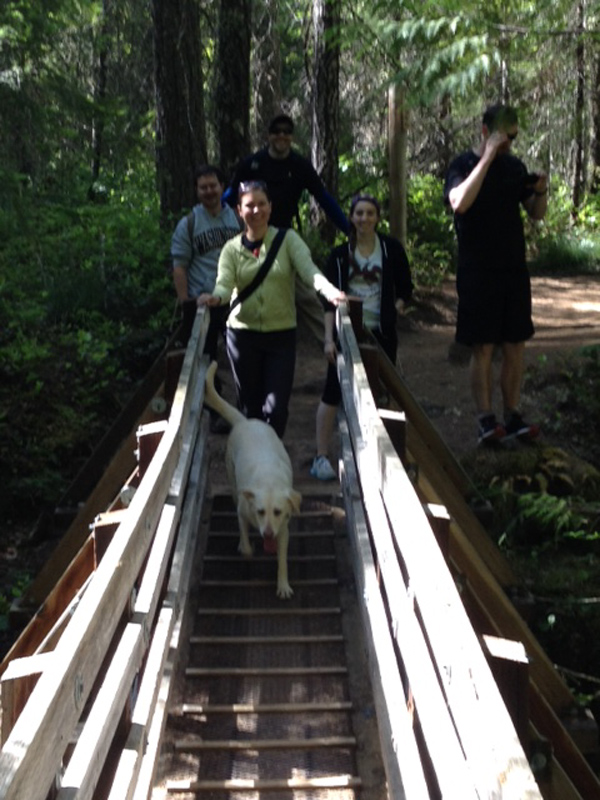

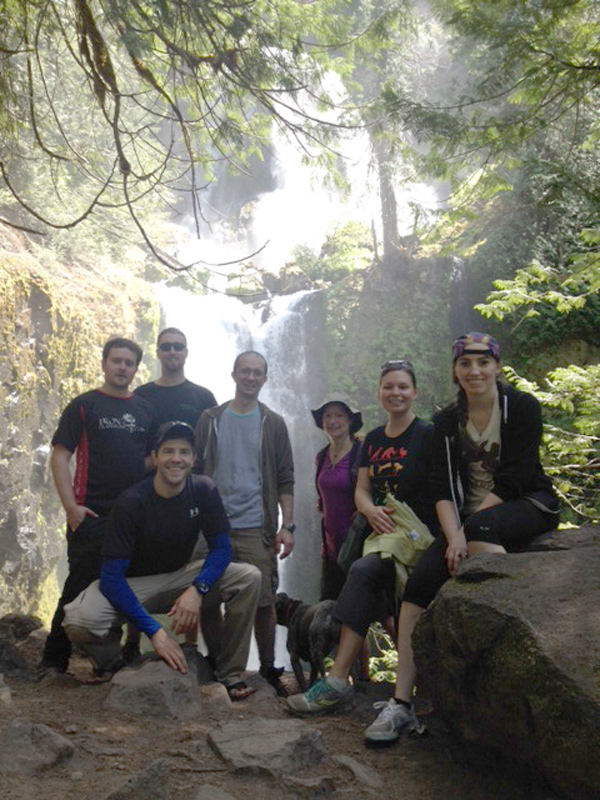

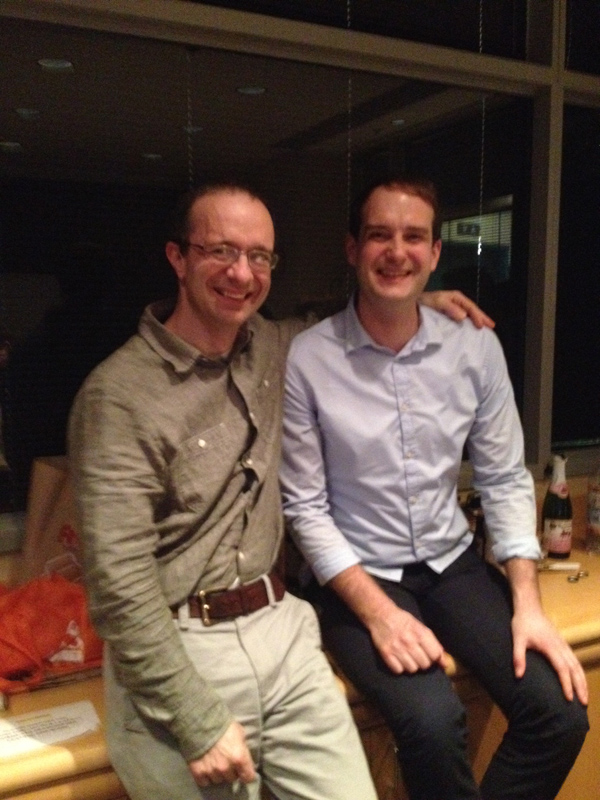
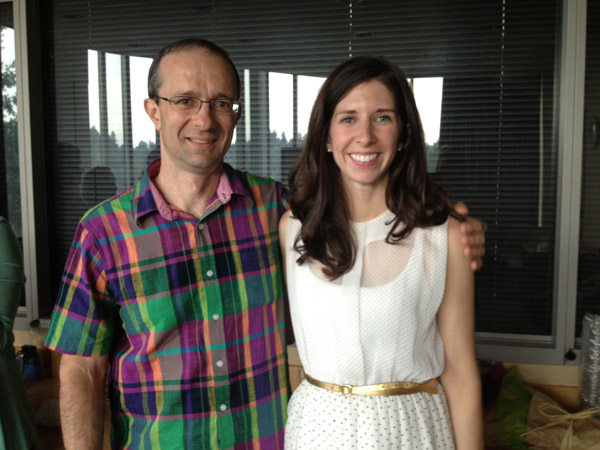
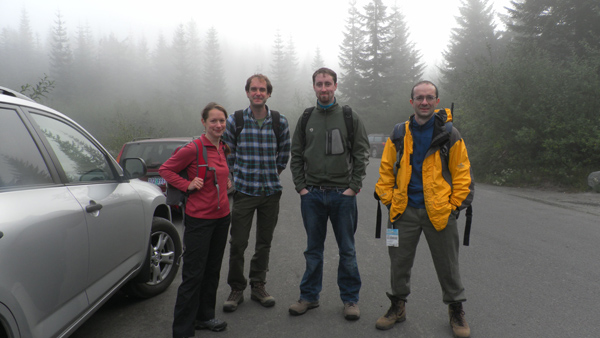
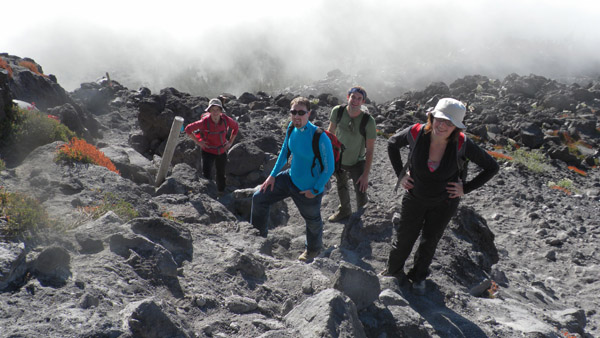
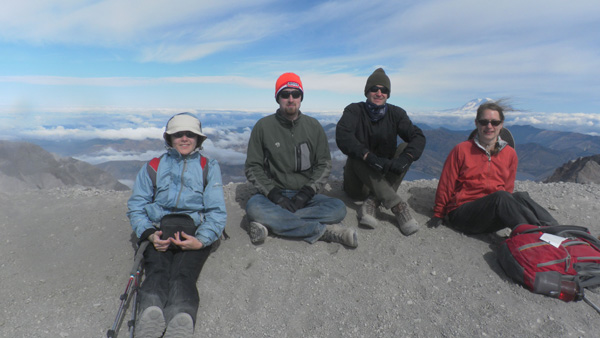

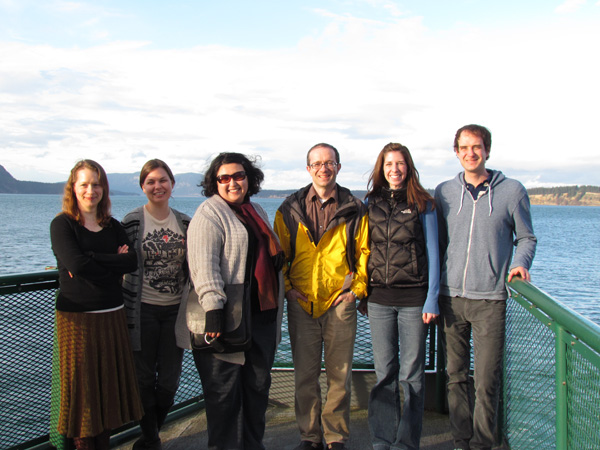




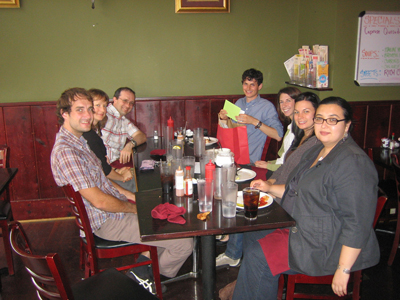
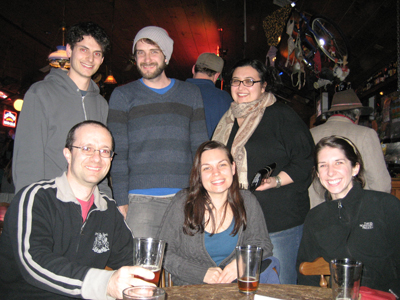
 Catherine (Katie) Drerup will join our lab as a post-doctoral scientist in March of 2009. Katie is currently finishing her thesis research at Northwestern University Interdepartmental Neuroscience Program in the laboratory of Dr. Jill Morris.
Catherine (Katie) Drerup will join our lab as a post-doctoral scientist in March of 2009. Katie is currently finishing her thesis research at Northwestern University Interdepartmental Neuroscience Program in the laboratory of Dr. Jill Morris.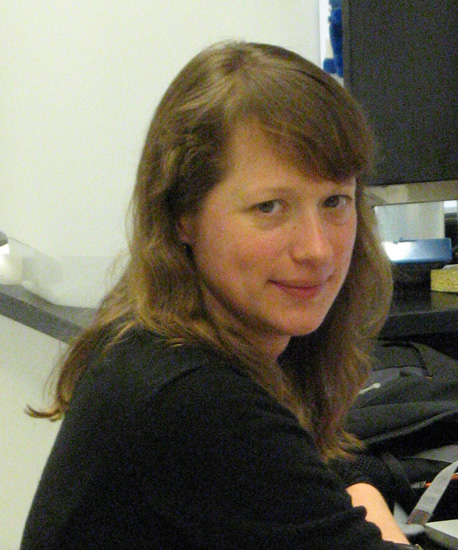
 Maya Culbertson has recently joined our lab. Maya has extensive experience in neuroscience research as well as some experience in zebrafish research. She obtained her B.A. in Molecular Biology from Princeton University and her Masters in Forensic Science from National University. Her recent job was at UCSD. Welcome to the lab!
Maya Culbertson has recently joined our lab. Maya has extensive experience in neuroscience research as well as some experience in zebrafish research. She obtained her B.A. in Molecular Biology from Princeton University and her Masters in Forensic Science from National University. Her recent job was at UCSD. Welcome to the lab! Zachary Lewis graduated from Reed College in 2006 and did his post-graduate fellowship there as well. His thesis research involved studying primordial germ cell differentiation in Threespine Sticklebacks. He won a prestigious Class of '21 award for his thesis research. Big welcome!
Zachary Lewis graduated from Reed College in 2006 and did his post-graduate fellowship there as well. His thesis research involved studying primordial germ cell differentiation in Threespine Sticklebacks. He won a prestigious Class of '21 award for his thesis research. Big welcome!